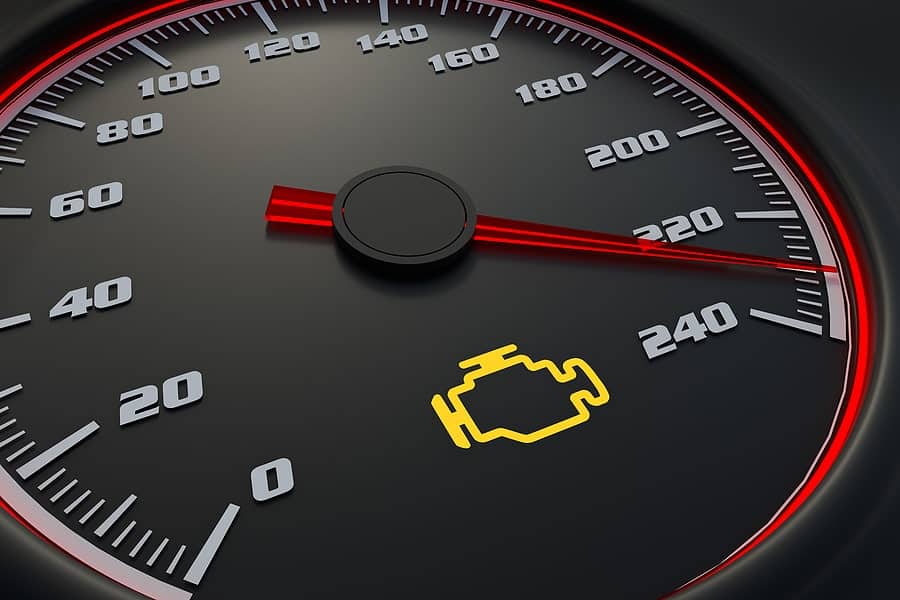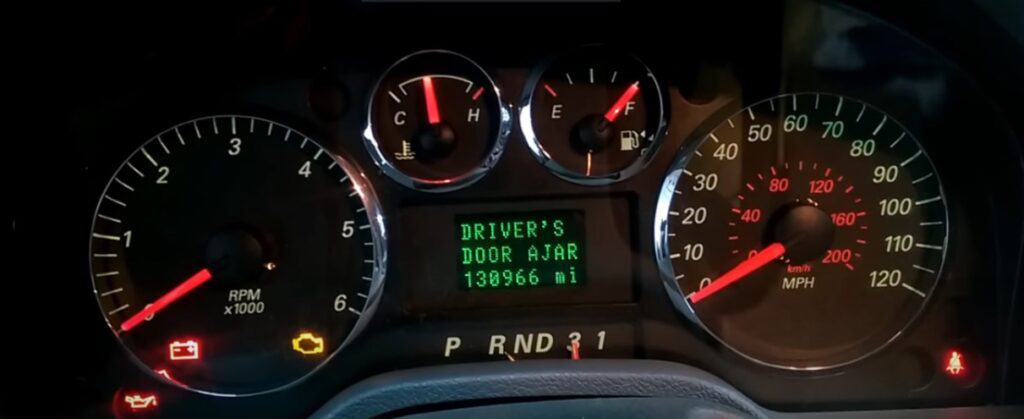The 2007 Ford Freestar, a successor to the Windstar, brought reliability and versatility to the minivan segment. Among its notable features, the Check Engine Light (CEL) takes center stage. It serves as a crucial indicator of potential issues within the vehicle. The check engine light could be on and blinking for several reasons. It could go from a loose gas cap to a fault in a sensor. In this comprehensive guide, we delve into the complexities of the 2007 Ford Freestar Check Engine Light. Let’s dive in to know more about the reasons why the CEL is on, how to reset or fix it, and the costs involved in fixing it.
What to Expect When the 2007 Ford Freestar Check Engine Light Is On?
The Check Engine Light, often labeled as the check powertrain light, acts as a visual cue signaling a problem within the Onboard Diagnostics System (OBD). The Engine Control Module (ECM) regulates various aspects of the vehicle based on sensor data. When the ECM encounters an unresolved issue, it triggers the CEL.
The check engine warning light of the Ford Freestar comes on when the ignition is first switched on. Ideally, once the engine is started, the check engine light should turn off. If the light remains even after or even while driving, it indicates a certain malfunction.
Understanding these dynamics is crucial for drivers as it indicates the presence of fault codes that require attention. This guide helps demystify the CEL, empowering drivers with knowledge on interpreting and addressing these codes.
Reasons Why 2007 Ford Freestar Check Engine Light Is On
Ignoring the Check Engine Light may seem tempting if the vehicle still runs smoothly. However, this oversight can lead to severe consequences, including a rough-running engine, poor fuel economy, and failed smog tests. This section explores common reasons for the CEL, such as a failed oxygen sensor, a loose gas cap, a weak car battery, faulty spark plugs, a defective mass airflow sensor, and engine misfires. Understanding these potential issues enables drivers to take proactive measures, preventing further damage and costly repairs.
- Failed Oxygen Sensor
The oxygen sensor plays a crucial role in measuring unburnt oxygen in the vehicle’s exhaust system. This information helps the ECM optimize the air-fuel mixture for efficient combustion and optimum mileage under varying driving conditions. With these sensors enduring high temperatures, failure is common after a vehicle crosses the 80,000-mile mark.
A malfunctioning oxygen sensor can have cascading effects, potentially damaging spark plugs and the catalytic converter, leading to expensive repairs. Additionally, a faulty catalytic converter may cause the vehicle to fail emission tests due to the release of harmful compounds like hydrocarbons and nitrogen oxides.
- Loose Gas Cap
Sometimes, a seemingly minor issue like a loose gas cap can trigger the diagnostic system to illuminate the engine light. The gas cap is an integral part of a sealed evaporative emissions system designed to prevent gas vapors from escaping into the air.
Leaving the gas cap loose can result in fuel loss through evaporation, and the exhaust gas recirculation system may not function smoothly as intended.
- Weak Battery in the car
A weak or inadequately charged car battery can lead to a flashing check engine light, with the ECM registering a trouble code. An illuminated battery light on the dashboard is an additional indicator of battery or alternator issues, prompting the need for immediate attention.
Drivers are advised to contact their service center promptly to schedule a battery service when such issues arise.
- Faulty Spark Plugs
Spark plugs are responsible for generating the electric spark necessary to start the engine. Worn-out spark plugs can lead to ignition problems, fuel wastage, and potential damage to other essential vehicle components.
Worn spark plug wires are another culprit that can trigger the check engine light. In some cases, the ignition coil may also be to blame.
- Faulty Mass Airflow Sensor
The mass airflow sensor measures the volume of air entering the engine, crucial for the ECM to determine the appropriate fuel injection into the combustion chamber. A malfunctioning sensor or any leaks in the air intake tract can trigger the check engine light.
Sensitivity to contaminants like dirt, water, and oil in the air tract can also prompt the check engine signal.
- Misfires of the Engine
Spark plugs, essential for igniting the air-fuel mixture in the combustion chamber, can cause engine misfires if the spark timing is off or if the fuel mixture and compression aren’t correct.
Other potential causes of engine misfires include a defective ignition coil, worn spark plugs and plug wires, and a faulty fuel injector. Ignoring the check engine light for persistent misfires can lead to severe consequences, including the risk of a mechanical failure in the car’s engine.

Why Is Check Engine Light Blinking?
A blinking Check Engine Light indicates a misfire detected by the Powertrain Control Module (PCM). This section clarifies the significance of this warning and explores potential causes, such as deteriorating ignition components or significant air/fuel mixture problems. By addressing these issues promptly, drivers can avoid more extensive damage to essential engine components.
Is It Safe To Drive With The Check Engine Light On?
While driving with a lit Check Engine Light is generally safe if there’s no noticeable change in performance, caution is advised. The guide outlines scenarios where immediate attention is crucial, emphasizing the potential risks associated with ignoring a flashing CEL. This section guides drivers on when to continue driving cautiously and when to pull over and seek assistance.

2007 Ford Freestar Check Engine Light Reset
Understanding how to reset the Check Engine Light is essential once the underlying issue is resolved. Methods include driving the vehicle until the light goes off, disconnecting and reconnecting the battery, or using an OBD-II scan tool. However, the guide stresses that resetting the light is only a temporary solution, highlighting the importance of addressing the root cause to prevent future occurrences.
How to Fix The Ford Freestar Check Engine Light
While a certified technician is the best resource for an engine light diagnosis, the guide offers practical tips for drivers. From tightening the gas cap to using an OBD-II scan tool, these steps empower drivers to take initial actions before seeking professional assistance.

2007 Ford Freestar Check Engine Light Costs
This section sheds light on the potential costs associated with a Check Engine Light diagnosis. A range of $88 to $144 for the diagnosis is discussed, with additional charges for taxes and fees. The guide also highlights that actual repair costs may vary based on the specific issue and labor charges.
2007 Ford Freestar Warning Lights & Dashboard Symbols
For a holistic understanding, the guide explores other warning lights and symbols on the Ford Freestar dashboard. It provides insights into the significance of these indicators, helping drivers distinguish between routine startup lights and potential issues that require attention. 2007 Ford Freestar check engine light is one of the important indicators of discharge.
Conclusion
This guide equips owners with the essential knowledge to navigate the complexities of the 2007 Ford Freestar Check Engine Light. By understanding the reasons behind its illumination, potential consequences, and steps for resolution, drivers can approach this common issue with confidence. Stay informed, drive responsibly, and ensure the longevity of your vehicle.
Also read,
